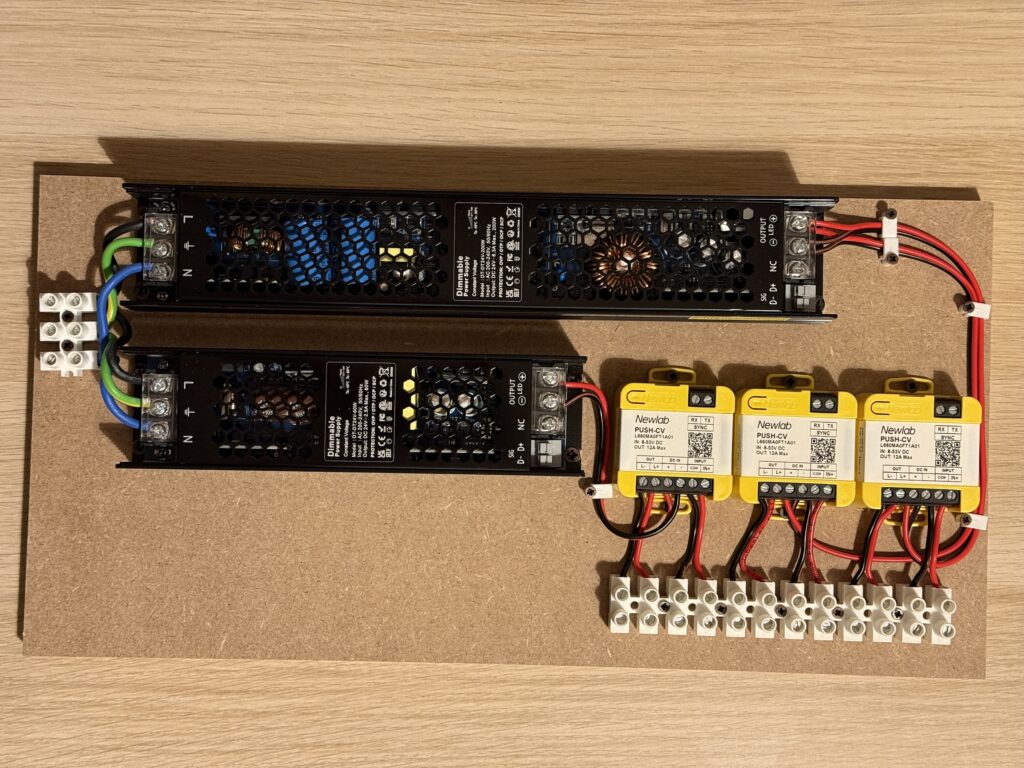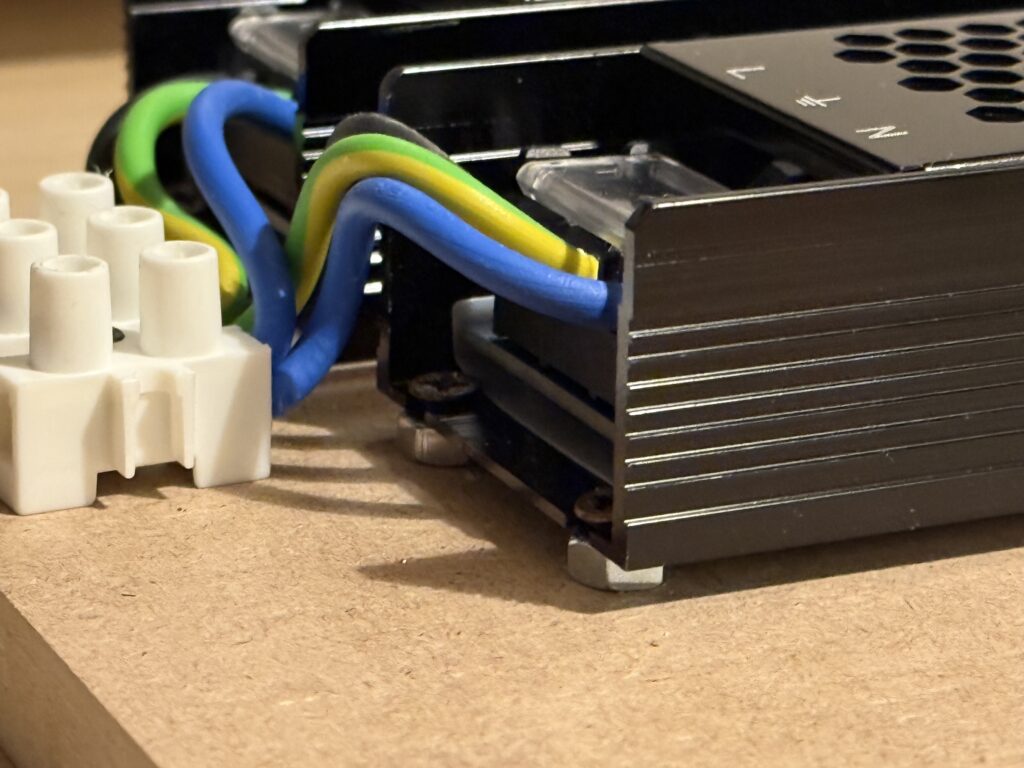Upgrading from Rapido to Micro-Trains Couplers
Step-by-step guide on upgrading from Rapido to Micro-Trains couplers an older Atlas EMD GP40-2 locomotive.
I recently purchased a pair of older Atlas CSX GP40-2 locomotives at a good price on eBay. My goal is to upgrade these locomotives by replacing the factory Rapido couplers with Micro-Trains 1015 couplers, installing a DCC decoder, and repainting and re-lettering them for the Southern Pacific.
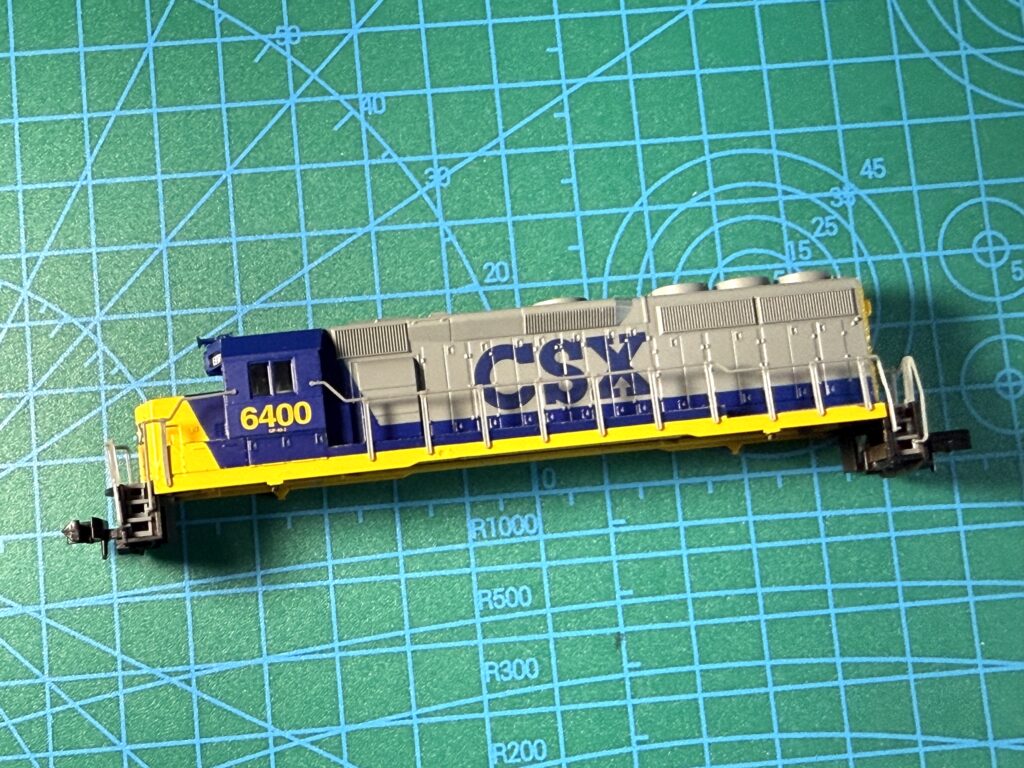
Removing the Old Rapido Coupler
Use tweezers to carefully remove the metal spring holding the Rapido coupler in place.
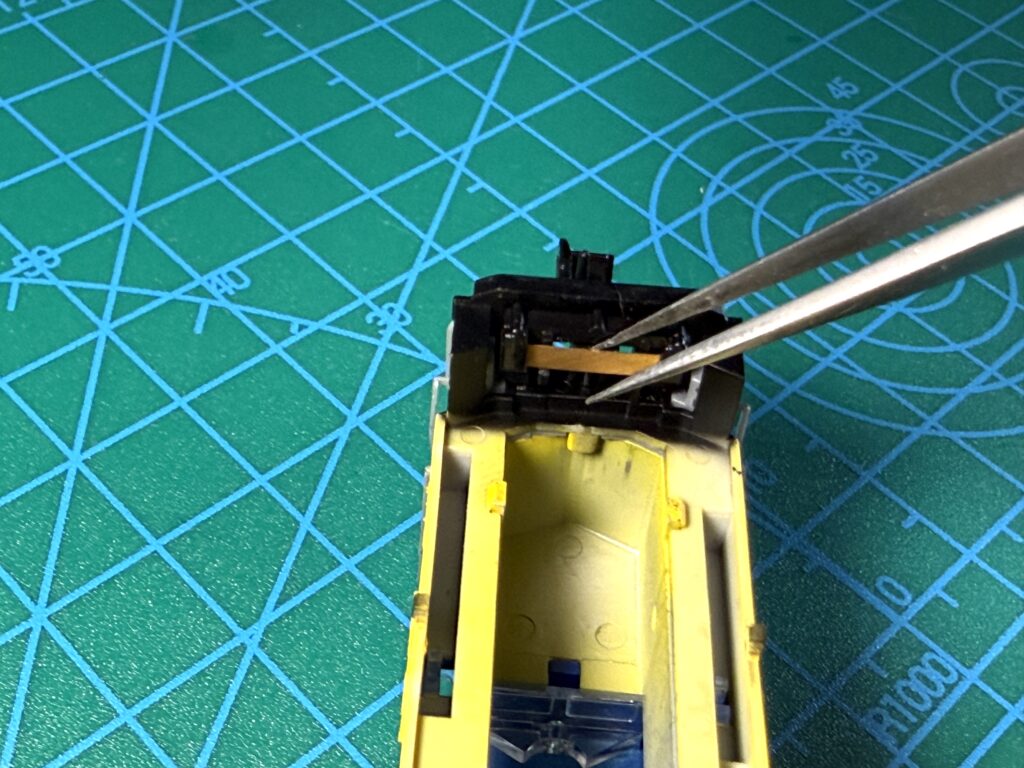
Gently detach the coupler retainer using tweezers or the non-cutting edge of a hobby knife.
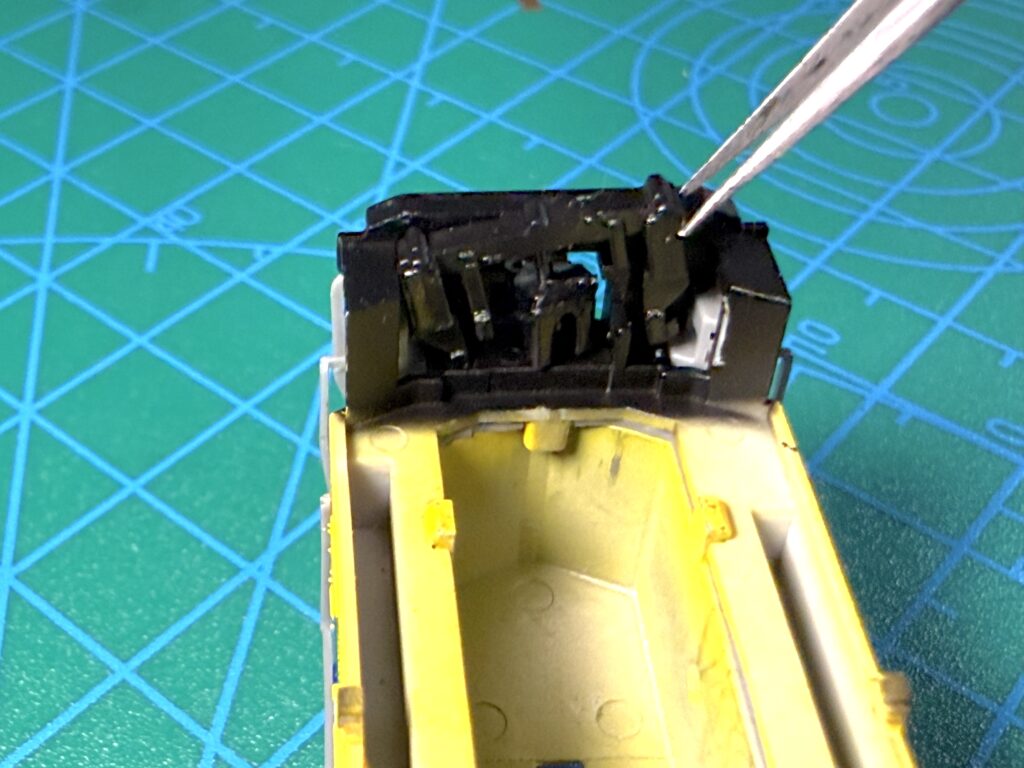
Installing the new Micro-Trains Coupler
Remove the Rapido coupler entirely. Insert a pre-assembled Micro-Trains 1015 coupler into the coupler box.
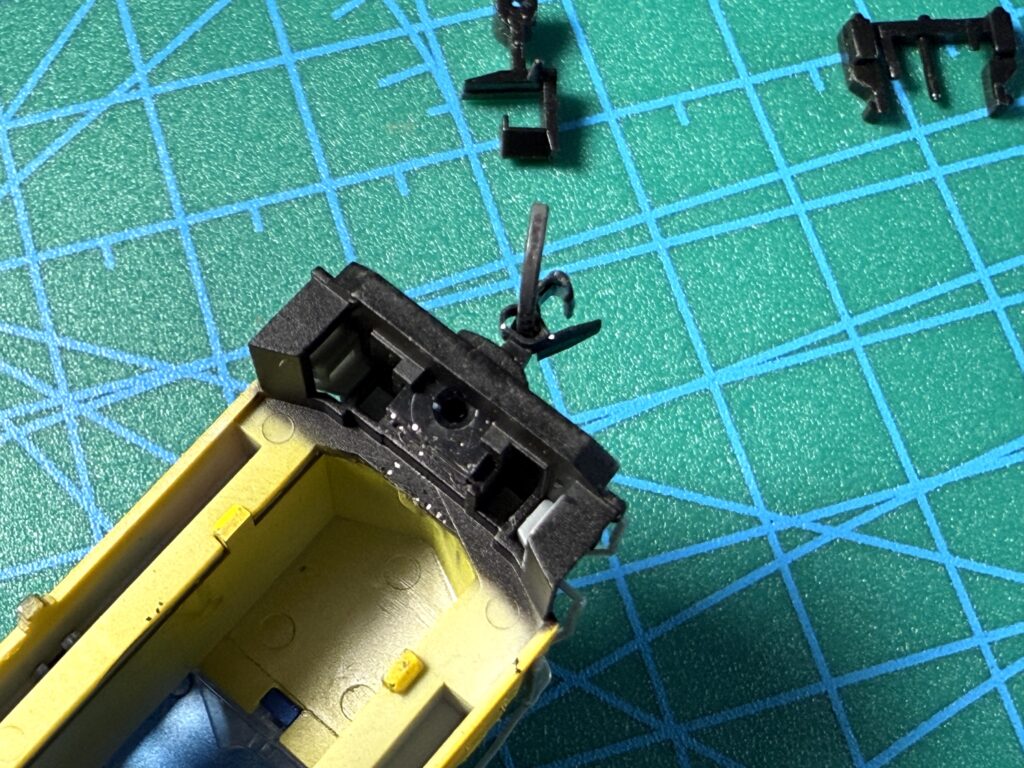
Fit the original retainer back into place and securely push it into position.
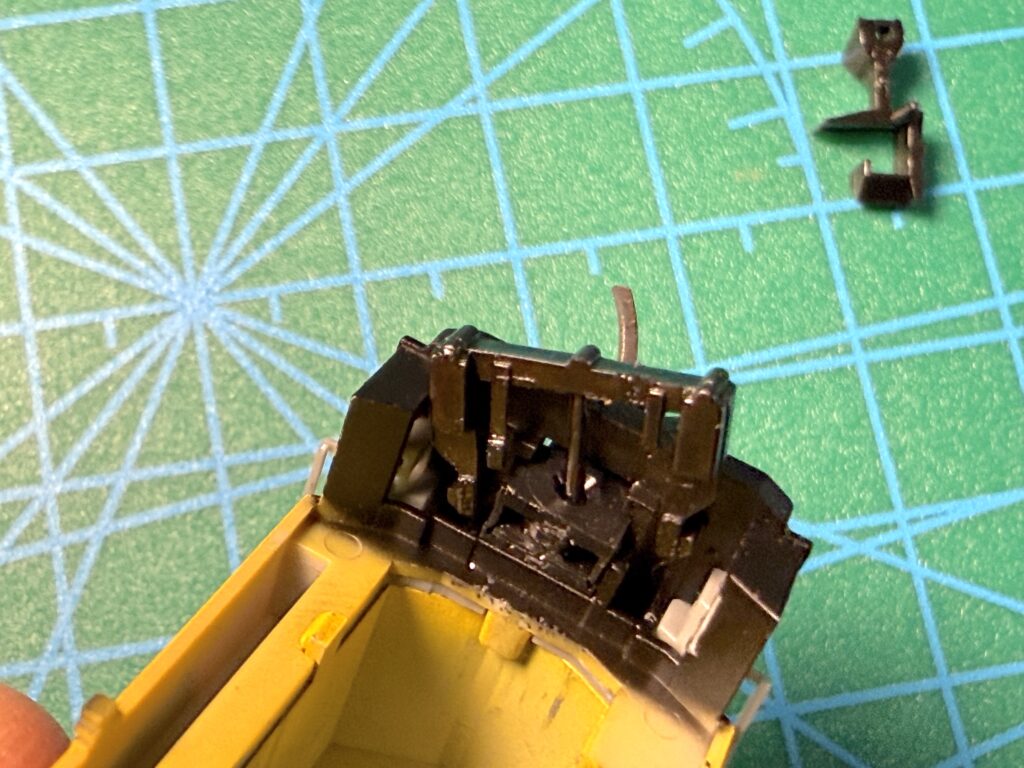
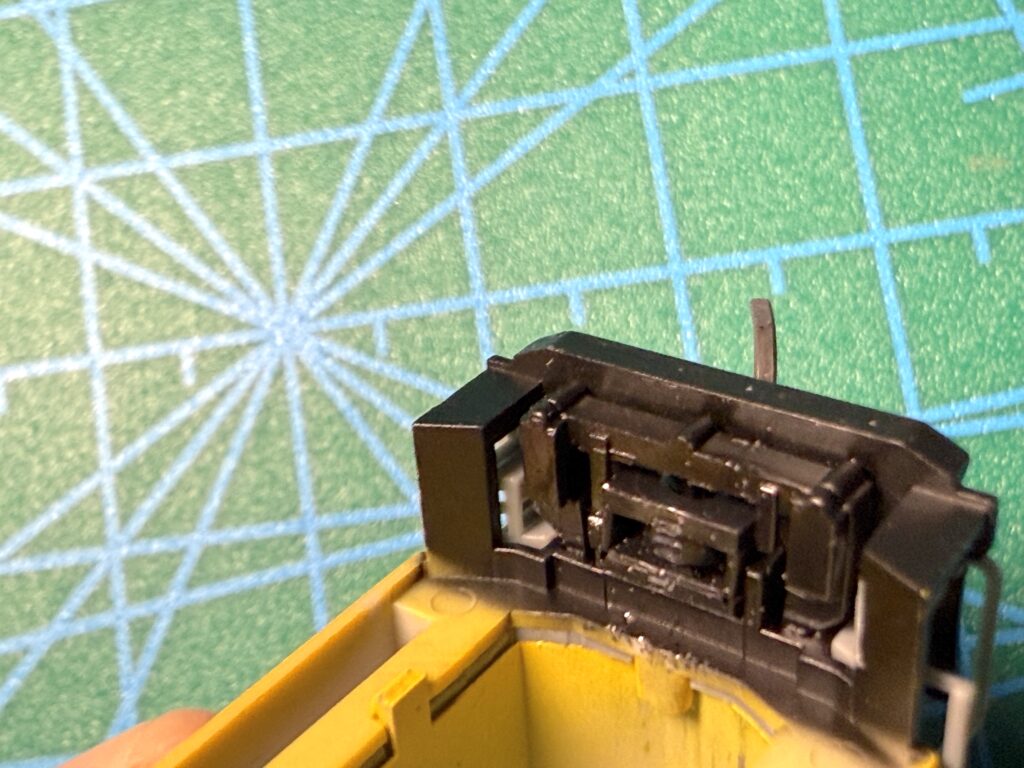
Checking Coupler Height After Upgrading from Rapido to Micro-Trains
Verify that both the front and rear couplers align correctly by using a Micro-Trains coupler height gauge.
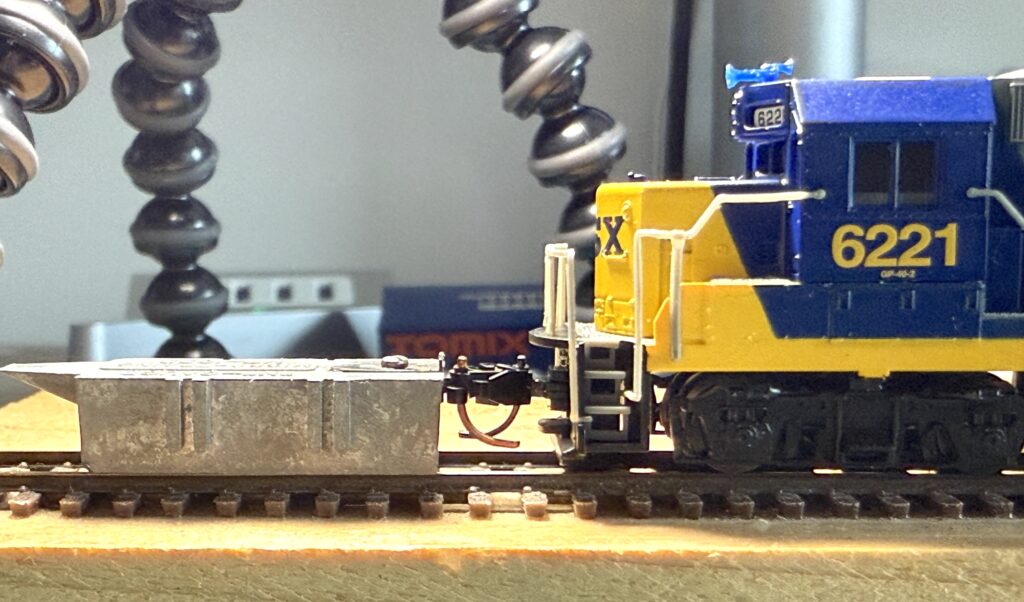
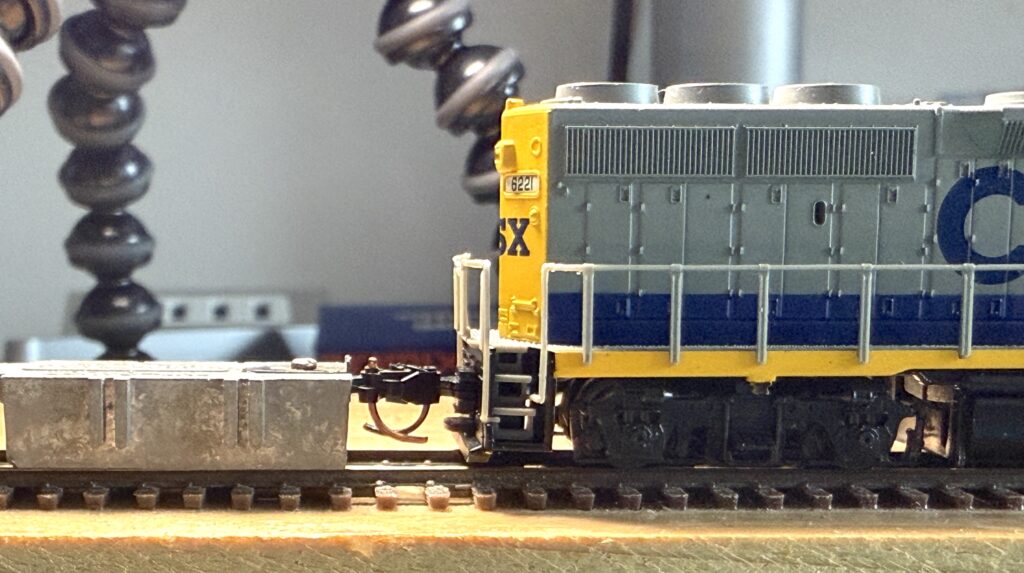
By upgrading from Rapido to Micro-Trains couplers, you will enhance the performance and appearance of your locomotives, ensuring compatibility with modern rolling stock while maintaining a realistic look.
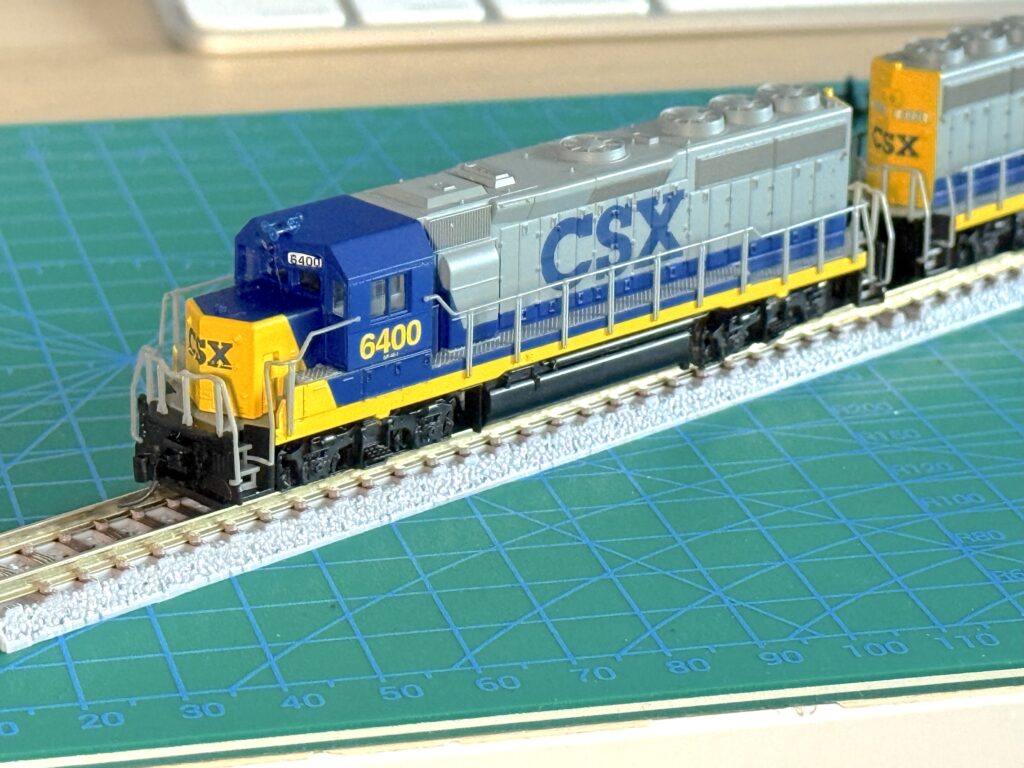
Rapido couplers, once a standard on many older N scale locomotives and rolling stock, are functional but lack the realism and operational reliability desired for modern model railroad layouts. They feature a bulky design that doesn’t closely mimic the appearance of real knuckle couplers, making them less appealing for hobbyists focused on realism.
Micro-Trains couplers, on the other hand, are widely recognized for their realistic knuckle-style design and superior performance. They provide smoother and more reliable coupling and uncoupling, which is crucial for layouts emphasizing realistic operation, such as switching industries or forming trains in a yard. Additionally, Micro-Trains couplers work seamlessly with uncoupling magnets, enabling hands-free operation, which enhances both playability and immersion.
For those looking to upgrade their layouts, converting from Rapido to Micro-Trains couplers is a worthwhile investment. It not only improves the overall aesthetic of the trains but also ensures smoother operations, reducing derailments and coupling issues that can disrupt realistic operating sessions.
